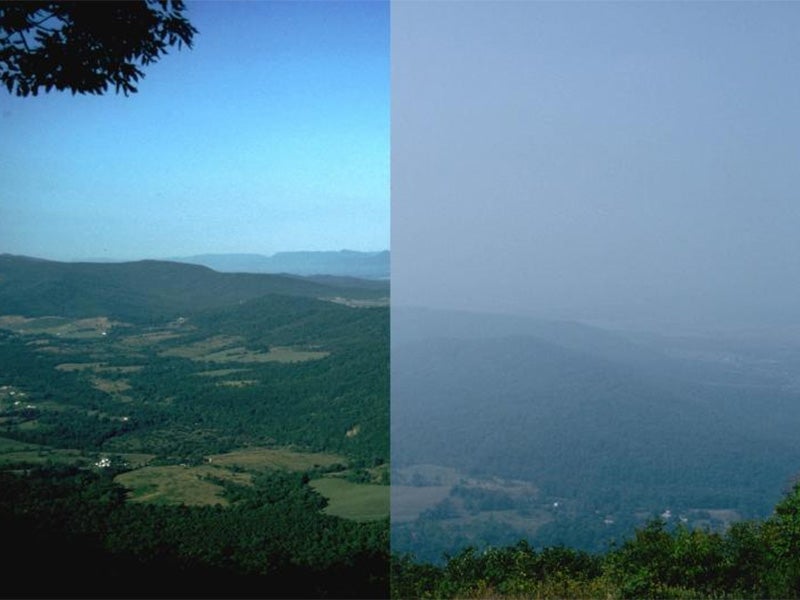Watching Our National Parks Fade From View
Human-caused haze is also stifling more than just a picture-perfect photos. The pollutants that ruin the views in our national parks are the same pollutants that ruin our bodies by contributing to heart attacks, asthma attacks, chronic bronchitis and respiratory illness.

This page was published 12 years ago. Find the latest on Earthjustice’s work.
Drops of sunscreen-infused sweat sting your eyes as you climb towards the summit; a small price to pay for the panoramic views that lie ahead.
But after finally conquering every switchback, your view of far-stretching vistas is obscured, not by sweat, but by haze created by coal-fired power plants – a polluting problem that afflicts many of America’s 400 national parks.
Each year these parks attract more than 275 million visitors who, like you, expect awesome visual experiences, whether standing cliff-side at Angels Landing in Zion National Park, conquering the Grand Tetons in Wyoming, or gaping from the valley floor in Yosemite at Half Dome.
Human-caused haze is also stifling more than just a picture-perfect photo. The pollutants that ruin the views in our national parks are the same pollutants that ruin our bodies by contributing to heart attacks, asthma attacks, chronic bronchitis and respiratory illness.
There are 2 million deaths per year caused by toxic pollution, including emissions of sulfur dioxide and nitrogen dioxide, poured into the atmosphere mostly by coal-fired power plants. So when the Environmental Protection Agency offered emission reduction exemptions for some of the oldest and dirtiest coal-fired power plants, Earthjustice refused to watch from the sidelines – it went to court.
On behalf of conservation partners, the organization recently filed a challenge to EPA’s approval of a program that allows coal-fired power plants in Wyoming, Utah and New Mexico to avoid reducing their emissions of haze-causing pollutants. Escaping federal requirements for stronger air pollution standards has been standard operating procedure for coal plants for decades.
This animation shows a view of the Grand Canyon on days with increasing levels of haze.
Source: Air Resource Specialists, Inc. for the National Park Service’s IMPROVE Program.
By allowing plants to avoid retrofit requirements to reduce sulfur dioxide emissions, the government is making it impossible to restore clear skies, explains Vice President of Climate and Energy Abigail Dillen. Such retrofits also would protect public health and lands.
Visibility in the western United States is only at 50 percent of its natural conditions, and, says Dillen, since we know coal plants are causing the problem, it’s time for the EPA to require clean-ups that should have happened years ago under the Clean Air Act.
“Our lawyers are ready to go to court to make sure that happens without interference from the moneyed coal interests that pollute our national parks,” she advises.
Enjoyable experiences in national parks should encourage admirers to leave with more than a keychain or postcard – assuming that they can actually see what’s there. Cleaning up the air is a significant way to insure that visitors actually have a chance to become awe-inspired witnesses of the wild.
Help protect these magnificant places today by showing support to the Obama Administration for policy changes that will close loopholes – bringing cleaner air to national parks.